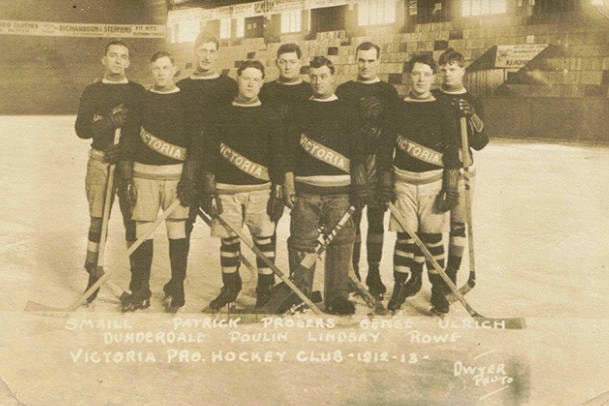A new study by an academic historian shows that hockey has not always been a violent sport, and that 110 years ago, organizers actually tried to remove violence from the game.
Taylor McKee, 30, is a history instructor at Thompson Rivers University in Kamloops. On Aug. 21, he successfully defended his doctoral thesis in history from Western University called Born of a Spirit That Knows No Conquering: Innovation, Contestation, and Representation in the PCHA, 1911-1924.
“Most of the research was spent looking at newspapers with an eye to the way they looked at violence,” McKee said. “The research is focused on early attempts to mitigate violence in hockey, and there were many.”
The Pacific Coast Hockey Association was run by entrepreneurial brothers Lester and Frank Patrick in Victoria, Vancouver, New Westminster, Seattle and Portland.
| Taylor McKee |
“They’re literally in the game itself, as owners, as entrepreneurs, and also as practitioners who are physically involved,” Mckee said.
“Other leagues did try things, but the PCHA was obsessed with trying to make the game safer and safer every year. It was the middle of the league’s life and it was very experimental.”
READ ALSO: 100 years of hockey in Victoria
READ MORE: When Victoria won the Stanley Cup
While the modern sentiment is that violence has been part of the game since the sport became popular in the 1890s, McKee’s research shows that the attempt to mitigate violence goes back just as far. It’s an extension from McKee’s master’s thesis, which he did at the University of Victoria, that studied hockey and violence in early 1900s Kootenay ice hockey games.
While the brothers are widely credited as key innovators who shaped many of the rules for the modern game (line changes, the forward pass), the brothers also took an unprecedented step. In 1914, they painted a black line in the ice of the hockey rink about 10 feet from the boards. It circled the entire rink, creating a no-contact zone along the walls.
It didn’t last, and many of their innovations didn’t, as the brothers constantly used the PCHA as a testing ground. And that’s something that should be celebrated in the face of push-back by “traditionalists” who believe violence is in the fabric of hockey, McKee said.
READ MORE: The forward pass forever changed hockey 100 years ago
“It was upon reading the rule changes and seeing how insistent they were upon clean hockey. A lot of these leagues [from that era] were using the pursuit of clean hockey to market the sport.
“Especially now. The NHL is at a crisis point. We know fighting isn’t right. We know it isn’t, but some still like it.”
The research was done online, using the University of B.C.’s online archive, B.C. Historical Newspapers. He also visited Oak Bay Archives for a period in 2017. It was there McKee was overwhelmed by the hospitality of former archivist Caroline Duncan, and the team of volunteers.
“As a historian, you sometimes search for archives other historians haven’t picked over, and Oak Bay is a gem,” McKee said. “You go in there and you’re helpless. The staff at Oak Bay Archives is a dream come true. I was torn, ‘Do I tell people about this?’ ”
READ MORE: Victoria’s first century of pro hockey captured in new book
One of the big surprises McKee found at the Oak Bay Archives was the original blueprints for the Patrick Arena that once stood on Cadboro Bay Road (across from Oak Bay High) from 1911 until it burned down in 1929.
“The blueprints are in immaculate condition and you can see what they were trying to build was a palace,” McKee said.
Considering that this was such an opulent stadium with stained glass, the anti-violence sentiment made even more sense, said McKee, adding they’re bringing the game indoors where there are atriums and ballrooms on top of the rinks.
“This is not a space where you go to see someone die. People try to paint this era as gladiatorial, as brutal and bloody, but it’s not.”



